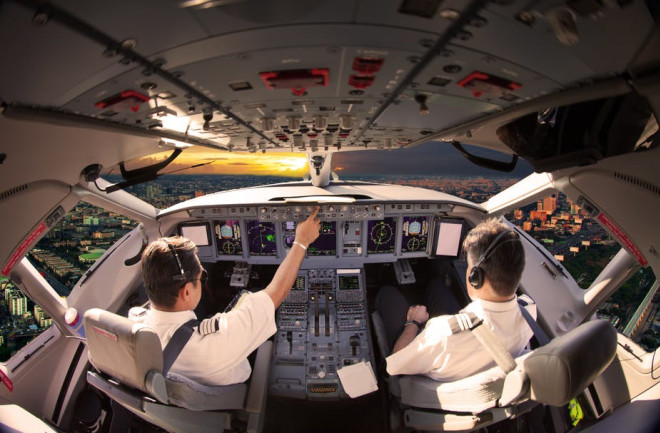(Credit: Shutterstock) Would you get on a plane that didn’t have a human pilot in the cockpit? Half of air travelers surveyed in 2017 said they would not, even if the ticket was cheaper. Modern pilots do such a good job that almost any air accident is big news, such as the Southwest engine disintegration on Tuesday. But stories of pilot drunkenness, rants, fights and distraction, however rare, are reminders that pilots are only human. Not every plane can be flown by a disaster-averting pilot, like Southwest Capt. Tammie Jo Shults or Capt. Chesley “Sully” Sullenberger. But software could change that, equipping every plane with an extremely experienced guidance system that is always learning more. In fact, on many flights, autopilot systems already control the plane for basically all of the flight. And software handles the most harrowing landings — when there is no visibility and the pilot can’t see anything to even know where he or she is. But human pilots are still on hand as backups. A new generation of software pilots, developed for self-flying vehicles, or drones, will soon have logged more flying hours than all humans have — ever. By combining their enormous amounts of flight data and experience, drone-control software applications are poised to quickly become the world’s most experienced pilots.
Your Next Pilot Could Be Drone Software

Newsletter
Sign up for our email newsletter for the latest science news
0 free articles left
Want More? Get unlimited access for as low as $1.99/month
Stay Curious
Sign up for our weekly newsletter and unlock one more article for free.
View our Privacy Policy
Want more?
Keep reading for as low as $1.99!
Already a subscriber?
Find my Subscription
More From Discover
Recommendations From Our Store
Shop Now
Stay Curious
Subscribe
To The Magazine
Save up to 40% off the cover price when you subscribe to Discover magazine.
Copyright © 2024 Kalmbach Media Co.
